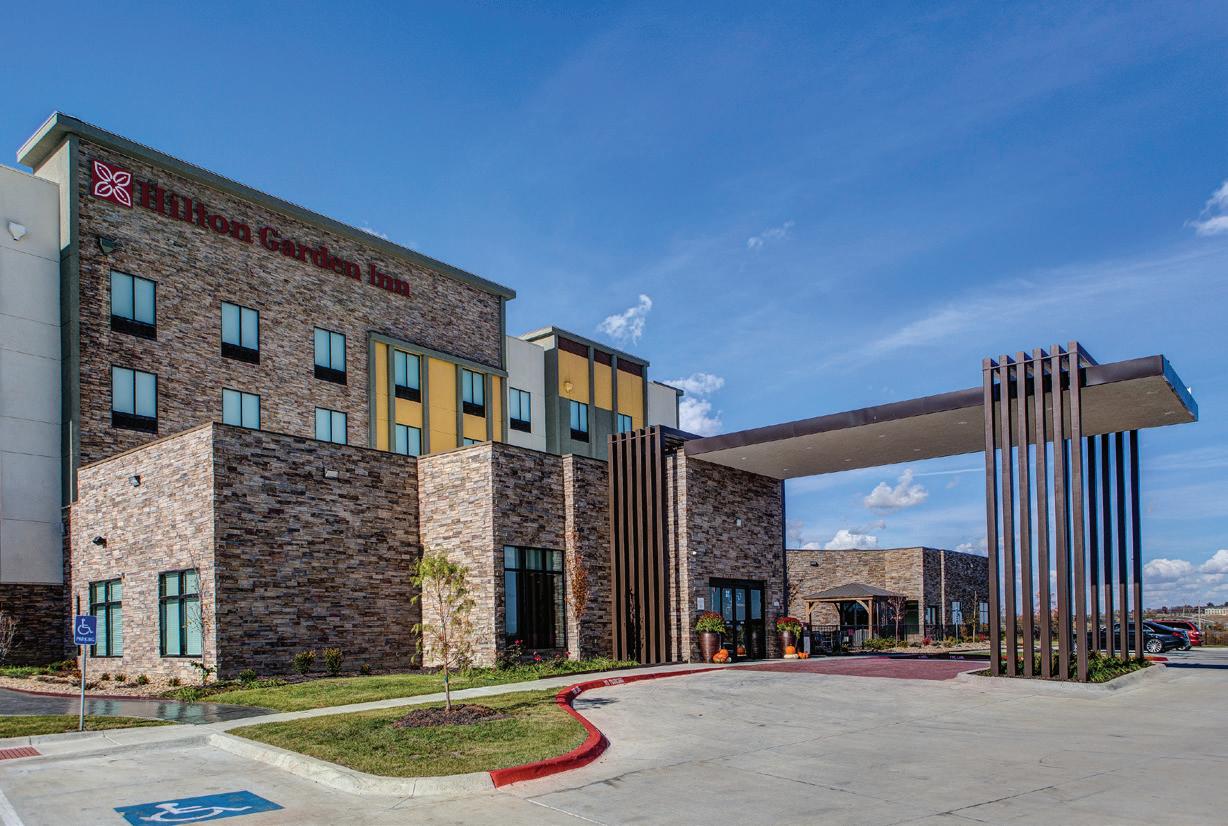
7 minute read
NONPROFIT
HOW WELL DO YOU KNOW YOUR VOLUNTEERS?
By Lorie Williamson, Blue Pencil LLC
Advertisement
Author’s note: Having worked and volunteered for a variety of nonprofit organizations over the past few decades, I have experienced the transformation that is taking place with volunteers across the nation. If we (both nonprofits and volunteers) acknowledge and embrace this change, those who give and receive can benefit more than ever!
It’s well-known that volunteers are an essential element of most nonprofit organizations. An estimated 25% of the adult population – 63 million Americans – contribute billions of hours volunteering, so it goes to reason that organizations should be willing to do whatever they can to retain their volunteers and keep them active. While volunteering offers vital help for those in need or the community at large, the benefits can be even greater for the volunteer. The right match can help volunteers experience personal growth, find friends, connect with the community, learn new skills and even advance a career. People volunteer for an assortment of reasons, so it is vitally important to understand where their motivation comes from to retain and grow your volunteer base. How well do you know your volunteers?
Volunteering has evolved
Volunteerism has shifted from a “call to service” in centuries past to an emphasis on individual choices for those who are passionate about giving back to society. With today’s online technology, nonprofit organizations and individuals can easily connect and have access to a wide variety of useful information. This creates endless opportunities for volunteering.1 But, despite the ability to cast a wide net in search of volunteers, many nonprofits struggle to attract, retain and increase their volunteer force. Much of this difficulty stems from not evolving in the same way individuals have when it comes to volunteering.
While most volunteers are looking to build a relationship with an organization they can support long-term, there are often other individual motivators at play as well. Among the
top reasons people choose to volunteer are personal growth, gaining a sense of community and skill development. Understanding and accommodating what today’s volunteers are looking for is crucial. It’s no longer enough to just put out the plea for volunteers and treat them all the same. Being aware of what motivates each person to give of their time while fulfilling your mission is vitally important when it comes to retaining and increasing volunteer support.
The heart and mind of volunteering
Personal growth is now a big motivator for many volunteers. People are interested in expanding their horizons or cultivating new interests. There is also more research suggesting volunteering can also have a positive impact both mentally and physically by counteracting the effects of stress, anger and anxiety. Volunteering on a regular basis can help combat depression, increase self-confidence and help keep you physically healthy.2 Keep this in mind when developing volunteer programs or roles. Help volunteers get to know your organization, engage with your mission and feel satisfied with the time they donate. Not only will your opportunity to garner their support increase, but it will also aid in bringing them back and inviting others to join them. Connections count
A sense of purpose and belonging is a driving force for countless volunteers. Looking for opportunities to serve with like-minded people, through a cause they are interested in, can be a powerful motivator. It is also a wonderful way to make new friends and strengthen current relationships. Volunteering can be especially helpful for those who are new to a community by expanding their social and/or professional support networks. Meeting regularly with the same group of people with a common interest allows everyone involved to practice and develop their social skills and is helpful for those who are shy and have a tough time meeting new people.
When nonprofits take the time to ensure they introduce volunteers to one another, it helps break the ice and bring them together from the very beginning of a project. While introductions may not work with a large group or project, providing name tags can help volunteers feel more at ease interacting with one another. The visual of having everyone wearing the same name tag or T-shirt also instills a sense of recognition and inclusion. This can
continued on page 16



Perfect for your next meeting and convention!
We are one of the only hotels in Lawrence, Kansas, with a full-service convention center, making your meeting and convention planning a one-stop shop!
Hotel highlights • Convenient location off the interstate and only minutes from downtown and the University of Kansas. • The largest meeting and event spaces in town. • Extensive easy-to-access complimentary parking. • Lobby connectivity with computer workstations and printers. Earn meeting • Large indoor saltwater pool and whirlpool. points with • State-of-the-art fitness center with yoga equipment. your Hilton • Two on-site restaurants – Heartlands Garden Grill and Boulevard Grill. Honors Rewards!
200 McDonald Drive Lawrence, KS 66044 Telephone: (785) 749-8932 Fax: (785) 841-2799 Lawrence.DoubleTreebyHilton.com
continued from page 15 go a long way in building relationships with your volunteers – and keep them coming back.
Branching out
Asking volunteers to list their skills and experience to place them where their talents can best serve an organization is what most volunteers run into when applying with a nonprofit. For some people, it is exactly what they are looking for. For others (more than you might think), they are eager to branch out and learn something completely new. This may be for personal reasons or to learn a valuable job skill or advance their career. Some people simply want to take a break from what they spend most of their time doing during their normal work hours. When given the chance, many volunteers express an interest in learning something new. Make sure there are opportunities to gain new skills, take on a task that is more challenging or has the potential for advancing to a higher level of service. Don’t assign mundane tasks that no one else wants to do. Organizations who accomplish this level of engagement with their volunteers experience a higher retention rate.
Bottom line? It’s not always about what volunteers can do for your organization that keeps them coming back. It is also about what they reap from their experience that keeps them around and volunteers who are engaged and dedicated often become generous donors as well. While your main goal should always be to fulfill your organization’s mission in the community, enhancing the lives of your volunteers will help you retain and increase volunteer involvement and retention. F
References
1. 1Hour Blog Team, The Evolution of Volunteering: Today vs In the Past, Aug 15, 2021, 1hourlife.org/ 2. Jeanne Segal, Ph.D. and Lawrence Robinson, Volunteering and its Surprising Benefits, October 2020, helpguide.org
Lorie Williamson, founder and owner of Blue Pencil LLC, combines her business and nonprofit experiences to help small business owners, entrepreneurs and nonprofits communicate effectively and efficiently in today’s ever-changing climate. For more information, visit www.bluepencilagency.net.
Williamson
Americorps.gov
The following information about volunteering in the United States comes from the 2019 Current Population Survey: Civic Engagement and Volunteering Supplement.
In 2019, an estimated 30% of Americans, or 77.9 million people, reported they volunteered for an organization or association. This rate has remained stable over the past two decades.
By the numbers
Kansas ranked 13th in state ranking by volunteer rate with a volunteer rate of 36.5%.
Kansas • 811,231 volunteers contribute 61.1 million hours of service • 36.5% of residents volunteer • Volunteer service worth an estimated $1.4 billion • 24.5% of residents do something positive for the neighborhood • 32.5% of residents participate in local groups or organizations • 65.1% of residents donate $25 or more to charity 26.5% of males volunteer; volunteer service worth an estimated $72.4 billion, while 33.8% of females volunteer; volunteer service worth an estimated $94.5 billion
By generation • 26.1% of Generation Y Americans volunteer • 28.2% of Millennial Americans volunteer • 36.4% of Generation X Americans volunteer • 30.7% of Baby Boomer Americans volunteer • 24.8% of Silent Generation Americans volunteer
Resource
AmeriCorps, Office of Research and Evaluation. (2021). Key Findings from the 2019 Current Population Survey: Civic Engagement and Volunteering Supplement. (by Laura Hanson Schlachter, Ph.D.) Washington, DC: Author.

Features Rooftop Glass-Bo om Suspended Pool Onsite Starbucks Scenic City View Event Space Wichita Downtown

Microwave, Keurig Coff eemaker & Mini Refrigerator 50" Television Complimentary WiFi • 10,000 sq. ft of meeting and event space Restaurant & 401 Bar • 24-hour Shop • ATM Onsite • Indoor Pool & Fitness Center
Topeka

Features Outdoor Game Area and Gazebo

Microwave, Keurig Coff eemaker & Mini Refrigerator • 50" Television Complimentary WiFi • Meeting and Event Space • 24-hour Shop Restaurant & 34th Star Bar • ATM Onsite • Indoor Pool & Fitness Center
1351 SW Arvonia Place Topeka, KS 66615 785.350.2069 hgitopeka.hgi.com 401 East Douglas Wichita, KS 67202 316.669.6175 wichitadowntown.hgi.com

